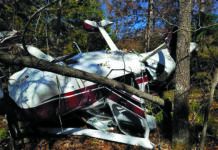That’s precisely what I was looking for as I walked the static displays at the 2014 U.S. Sport Aviation Expo in Sebring, Florida. The January event is a growing venue that unofficially kicks off a fresh flying season. I look forward to the show because I use it to gauge the health of the LSA market and to sample the mood of buyers in the lower end of the market. The Sun ‘n Fun international fly-in, which follows in early April, is more revealing.

Organizers said the 2014 LSA show was the most successful in its 10-year history, but that doesn’t necessarily mean vendors were selling lots of airplanes. The ones I talked with said the quality of the visitors was better than in previous years. In show talk, that means fewer tire-kickers and more qualified buyers. Thierry Zibi from Sam Aircraft told me that most of the potential buyers he spoke with were knowledgeable about the LSA market and came to Sebring ready to buy. Other vendors reported a similar trend, but not many orders.
I hung around the Flight Design, Van’s Aircraft and American Legend tents and talked to a bunch of buyers that, although weren’t quite sure what they wanted to buy, were ready to buy something, as long as it was affordable to own. That’s what brought them to the LSA market after deciding that most new or existing Part 23 aircraft wouldn’t fit the budget. These were experienced pilots who had previously owned higher-end aircraft, had current medical certificates and expected to pass future FAA medical exams.
“I looked at the used Cirrus market and couldn’t justify the cost of operating and maintaining one of those airplanes. The Van’s RV-12 is more appealing given its purchase price, economical fuel burn and perceived ease of maintenance,” one buyer told me following a demo flight in the RV-12.
While I saw signs of affordability and design improvements in the maturing LSA market, the overall mood toward the rising costs in the certificated market was grim. I left Sebring more skeptical of seeing lower prices in consumables and certified avionics. Then I talked with George Pariza, the director of product marketing at Aspen Avionics.
As we report in the Aspen VFR glass article on page 8, Aspen just introduced a retrofit glass display called the Evolution 1000VFR. It’s a certified PFD that’s aimed at VFR pilots, lower-end aircraft and lower budgets. Is this the start of a new trend in affordable avionics? At the least, according to Pariza, it’s an answer to a market segment that’s being ignored. Per Aspen’s calculations, more than half of the 470,000-pilot population only flies VFR, yet avionics manufacturers continue to target the entire pilot population with high-end products. These are products with advanced, IFR-flying capability and a high-end price point.
When Aspen surveyed the market, it found that pilots unanimously agreed that avionics manufacturers are delivering products to fit the capability of the aircraft rather than the capability of the pilot. As a result, Aspen believes that a sizable percentage of the current market is asking for a new product that fits the simpler mission of a VFR pilot. Aspen knows that a VFR mission can change. While the new VFR PFD is defeatured (and priced considerably less than the Aspen Pro PFD), it can be upgraded for IFR capability. I’m interested to hear your thoughts on Aspen’s read of the market.
The more I think of Aspen’s affordable product introduction, the more I think about BendixKing. This was the company that several years ago vowed to address the VFR pilot with a new line of simple yet modern products that are easy to use and easier to afford. If you ask me, it looks like Aspen is answering a market that’s tired of waiting. —Larry Anglisano




